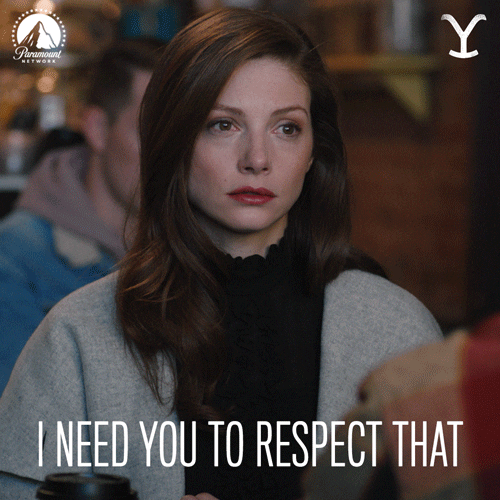Is “Fifty Shades of Grey” your introduction to BDSM? If yes, then you may have noticed Christian Grey’s BDSM contract. Yes, some BDSM practitioners do have written agreements, but they’re rarely that complicated. Subs, in reality, also get a say on what to put in the contract—unlike poor Anastacia Steele. That’s called negotiating.
Whether you’re a Dom or a sub, this article will help you learn how to effectively reach an agreement that fits both you and your partner.
The Curious Case of the “Grey Contract”

Now that we’ve already brought up “Fifty Shades of Grey,” it’s indeed a phenomenal hit. It got millions of fans. But although it brought BDSM and kink to the limelight, the author got so many things wrong about BDSM. For starters, it romanticizes a manipulative, abusive, and coercive relationship.
It also somehow insists that being abused is the only reason why people would be into BDSM. It’s not! BDSM is all about consent. So manipulating someone to do what you want isn’t aligned with what this kink stands for.
The contract featured in the story also caught our attention. While it may have popularized the idea of having a written agreement, there are several reasons why we think it’s bad. For one, it’s highly restrictive and one-sided. It doesn’t allow for much negotiation or creativity on the part of the submissive.

It gives all the power to Christian and leaves Ana with very little say in what happens. It also includes some very extreme activities that could be potentially harmful, such as not being allowed to leave Christian’s apartment or go to the police if something happens to her. It simply doesn’t provide any protection for the person who signs it. It’s also quite lengthy and complicated, which makes it difficult to understand.
Now that we’ve gotten that out of the way, let’s see what a real-life BDSM contract looks like.
What is a BDSM Contract and Why Would You Need One?
A BDSM contract is a written agreement that outlines the terms and power exchange dynamic of the relationship, including the roles and responsibilities of each party, the limits of each person’s activities, and any other important details. It may also include safe words and other safety measures. The contract helps ensure that both parties are clear about what’s expected of them. This helps prevent misunderstandings and hurt feelings later on.
Dominant-submissive contracts are negotiated, drafted, and written pretty much the same way as any regular contract. Although they’re not legally binding, they help create a structured and safe environment for both parties involved. Plus, making things more formal adds a bit of excitement and anticipation to the relationship and your BDSM play.

The dominant party usually writes the BDSM contract, as they’re the ones setting the terms and conditions of the relationship. But the submissive party also has a say in the contract. They may even write their own version of it.
BDSM contracts aren’t always necessary. A verbal agreement is usually enough for most people but the use of contracts is becoming more and more popular within the BDSM community. So much so that they’ve become a key element in many dom-sub relationships.
10 Different Types of Power Exchange Dynamics
Before you can start negotiating and writing an effective BDSM contract, you first need to identify what kind of relationship dynamic you have.
- D/s - A D/s relationship is a power dynamic between two people where one person is the dominant partner and the other is the submissive partner. The dominant partner has control over the submissive partner and sets the rules and boundaries for the relationship. The submissive partner agrees to follow these rules and submits to the dominant partner’s authority.
- Master/slave - This is similar to D/s, but with a more intense power dynamic. The slave is completely under the control of the master and has no say in what happens in the relationship.
- Sadomasochism - One person enjoys inflicting pain, while the other enjoys receiving it. This relationship can be either sexual or non-sexual.
- Bondage and discipline - The dominant partner controls the relationship and sets rules for the submissive to follow. The submissive is then disciplined if they break these rules.
- Cuckolding - One partner allows the other to have sex with other people, while they watch.

- Voyeurism and exhibitionism - One partner enjoys watching the other have sex, while the other enjoys being watched.
- Fetishism - One partner has a sexual fetish for a specific object, body part, or activity. The other partner may or may not share this fetish.
- Financial domination - One partner controls the other financially. The dominant partner may set a monthly allowance, dictate how the submissive partner spends their money, or even control their access to money.
- Mental domination - One partner controls the other through psychological means. The dominant partner may control what the submissive partner eats, wears, and even where they go.
- Age play - One partner takes on a different age than their actual age. The dominant partner may be much older or younger than the submissive partner. This can be either sexual or non-sexual.
12 Tips for Negotiating a Contract
BDSM contracts are very simple. You don’t need a lawyer to write one. But don’t let that fool you because there are many things to go over. If you’re a sub, you don’t want to get the short end of the stick. Yes, you’re the submissive, but you still gotta fight to have your inputs included in the contract. Have more balls than Ana!
Here are a few things to keep in mind when negotiating a BDSM contract.
- Make sure you both know and understand what you’re looking for in a contract.
- Know exactly what you want. Discuss your kinks, fantasies, and limits in detail. Be as specific as possible.
- Don’t be afraid to negotiate!
- Make sure you both agree to the terms of the contract before you sign it.
- Be sure to keep a copy of the contract for your records.

- Be sure to communicate with your partner about your needs and wants.
- Be sure to respect your partner’s limits and boundaries.
- Always include a unique safe word in the contract.
- Establish what kind of aftercare you both need and want.
- Set up a system for check-ins and aftercare.
- Have a trial period to make sure the contract works for both of you.
- Be willing to renegotiate the contract as needed.
15 Things to Include When Negotiating a Contract
When you have an idea of what you want from the relationship, it’s time to write the first draft of the contract. You can buy a BDSM contract or download a free template on the internet. Now, all you have to do is change or add details.
But creating your own gives you more flexibility in personalizing it. Don’t worry. Writing one isn’t that hard at all. It doesn’t have to be that formal. You just need to include important details, such as the following.
1. Roles and expectations

Do you have certain expectations from the relationship? This is the time to spell everything out—before anything else. You need to sit down with your partner and decide who’s going to be the dominant and who’s going to be the submissive. You also need to decide what each of you expects from the other during BDSM play.
2. Duties and responsibilities
What are the obligations of both parties? What are the specific things that each party is required to do under the contract? It is important to be clear about the obligations of both parties before signing the contract. This helps ensure both parties are aware of and comfortable with the power dynamic that’ll be in play during their relationship.
3. Boundaries

What are the limits of both parties? What are the things that are absolutely not up for negotiation? It’s important to know your own limits and those of the person you’re negotiating with before starting to negotiate a contract. This includes both soft and hard limits. Decide what activities are off-limits and what activities you’re willing to try. It’s important to be honest with each other so that no one gets hurt.
4. Safe word
How do you let your partner know that they’ve breached a hard limit? A safe word is a word or phrase that either of you can use to stop the BDSM play if it gets too intense. This is an important part of BDSM because it allows both of you to feel safe and comfortable knowing that you can stop the play if either of you wants to. Discussing and including this in the contract helps you avoid having a conversation about safe words before every scene.
5. Punishment

What are the possible consequences for both parties if the contract is breached? What could happen if one party doesn’t uphold their end of the agreement? It’s important to consider the possible consequences for both parties if the contract is breached.
If either of you breaks the rules of the BDSM contract, there should be a punishment that is agreed upon ahead of time. This punishment could be something like spanking, verbal humiliation, or anything else that you both agree on.
6. Aftercare
What happens after a scene? Well, you shouldn’t end things without talking to each other. It’s easy to get lost in the moment and forget to take care of each other afterward. But aftercare is a vital part of any BDSM relationship.
It’s important to check in with each other and make sure that everyone is doing alright after a scene. It can help prevent any negative feelings or reactions that may occur after a scene. It also helps build trust between the two parties. So make sure what kind of aftercare both of you want or need.
7. Training schedule

A training schedule is important for a BDSM contract because it sets forth a specific plan for the submissive’s training and development. It provides structure and guidance for both the sub and the dom. It also helps ensure the goals of the contract are met. The schedule can include activities, tasks, and expectations for both partners, and can be used as a tool to track progress and identify areas needing improvement.
8. Time limit
How long do you plan to play each day? If you’re both new to BDSM, it might be a good idea to set a time limit for your play. This way you can both go into it knowing that it won’t last forever and you can take a break if either of you starts to feel overwhelmed.
9. Terms of agreement

What are the terms of the contract? What are the specific details of the agreement? It’s important to be clear about the terms of the contract before signing it. Terms of agreement help establish clear boundaries and expectations between the parties involved in a BDSM contract. They can help prevent misunderstandings and provide a framework for negotiation and consent.
10. Expectations
What are the goals of both parties? What is each person hoping to get out of the contract? It’s important to be clear about your goals and objectives going into the negotiation. This ensures both parties know exactly what they’re hoping to get out of the relationship to prevent misunderstandings, conflicts, or hurt feelings later on.
11. Rights of both parties involved

What are the specific rights that each party has under the contract? It’s important to be clear about the rights of both parties before signing the contract. This will help avoid misunderstandings down the road.
12. Commands
It’d also be a good idea to have a list of specific commands from the dom and how the sub should act when given one. This is highly useful when entering into a contract with a service submissive.
13. Referring to each other

How should the dom and sub refer to each other? The slave should know how to address their master. It’s also important to know if there are off-limit words. For example, some subs take offense to certain terms or naughty words that might be okay with others. So make sure you communicate everything that needs to be communicated.
14. Other partners
Will other people be joining the relationship? What role will they play? What are the limits? If you’re in a non-monogamous relationship, you should also have a provision in the contract on how to deal with other partners. This includes if anyone is allowed to touch other couples when you’re in a kinky play party.
15. Progress chart

This one’s not necessary but nice to have. After all, everyone loves seeing a gold star next to their name. Adding a reward system or progress chart helps the sub see how well they’re doing.
BDSM Contracts: A Quick Recap
Many things can be included when negotiating a BDSM contract, but many things also shouldn’t be included. Here are some important reminders when writing a BDSM contract.
Do:
- Make sure to include a safe word or phrase in the contract.
- Make sure all parties involved are comfortable with the terms of the contract.
- Be clear and concise with what is expected of each person.
- Make sure everyone involved understands the consequences of breaking the contract.
- Be sure to include any limits or boundaries of everyone involved.
Don’t:
- Don’t make the contract overly complicated or confusing.
- Don’t make any assumptions about what each person is willing to do.
- Don’t hesitate to ask for clarification if there’s anything either person is unsure about.
- Don’t put anything in the contract that could potentially hurt or embarrass anyone involved.
- Don’t force either party to do something against their will.
One Last Thing
BDSM can be a very intense experience, so it’s important to make sure you and your partner are both on the same page before you start. You both need to be aware of and agree to the activities that’ll take place during BDSM play.
You should also make sure that your partner wants to engage in BDSM play before starting. You need to ask for their consent and make sure that they’re comfortable with everything that’ll take place. If not, don’t do it.
Once you’ve written the contract, both of you should read it over to make sure you agree to the terms. If one of you disagrees or feels uncomfortable with something, make sure to change it. Also, nobody said you can’t renegotiate when things aren’t working out anymore. If your partner doesn’t want to, then consider that as a big red flag.





